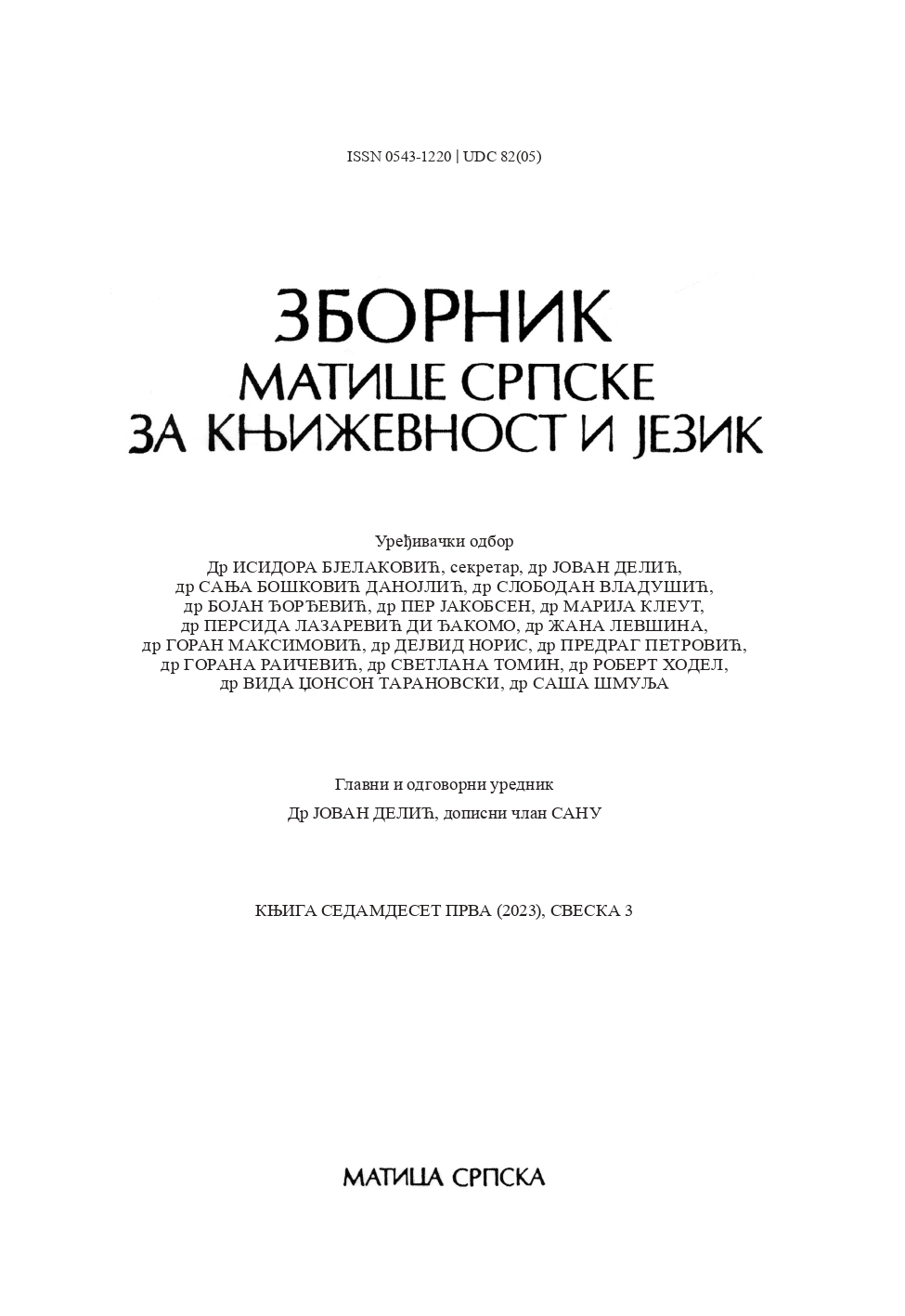ЛИНГВОКУЛТУРОЛОШКЕ КАРАКТЕРИСТИКЕ ЛЕКСЕМЕ МИШ У САВРЕМЕНОМ СРПСКОМ ЈЕЗИКУ
LINGUOCULTURAL CHARACTERISTICS OF THE LEXEME MOUSE IN CONTEMPORARY SERBIAN
Author(s): Gordana R. Štasni, Gordana R. ŠtrbacSubject(s): Language studies, Lexis, Cognitive linguistics
Published by: Матица српска
Keywords: lexeme mouse; language picture of the world; concept; Serbian language and Serbian culture
Summary/Abstract: The language picture of a mouse in Serbian is created on the elements of linguocultural theory. This animal has an important place in Serbian culture and has numerous symbolic representations. In the Serbian tradition, very old rituals are performed to protect against vermin. Therefore, the starting point in understanding this issue is dedicated to the mouse in the traditional Serbian picture. The following segment shows the mouse in the modern Serbian picture, based on encyclopedic data about it and information in the Dictionary of associations in the Serbian language. At the linguistic level, the semantic-derivational potential of the lexeme mouse was observed based on the semantic content, scope and composition of its derivational nest, to emphasize how and to what extent traditional, scientific and modern understanding of the mouse is reflected in language. The linguistic aspect is complemented by the consideration of terminological expressions, phraseologisms and proverbs with the mouse component. The analysis shows that all segments of the Serbian language picture of a mouse contain a component of the qualifying type, based on which this animal is determined as a pest. For example, a large number of derivatives from the nest with the motive word mouse is based on the perception of the mouse as a pest: names of animals that feed on mice and darken them: birds (mišar, mišolovac, mišolovica, mišljak, mišožder), snakes (mišarica, mišovka), cats (mišar, mišolovica), nomina instrumenti as names of a device used to hunt mice (mišolovka, mišnica) and names for the chemicals that poison mice (mišemor, mišomor, mišjak). The lexical system includes calendar days dedicated to protection from mice (Mišoljdan). The productive components, contained in other fragments of the overall language picture of the mouse, concern its size, the looks of body parts, especially the shape of the muzzle and the length of the tail. The productivity of these components is evidenced by numerous derivatives that conceptualize the properties (mišolik, mišast, mišookast, mišorepast). Some derivatives are named animals based on metaphorical associations in the shape of the snout and tail or fur colour (fish – mišar, mišac; horses – miškać, miškulaš, miško) even and plants (mišjakinja). However, these mouse properties do not have a motivating function in the formation of phraseologisms and proverbs. Information on the distribution and habitat of mice is especially characteristic of terminological compounds (balkanski miš, poljski miš, šumski miš, kućni miš), which is certainly a consequence of the scientific understanding of mice and is maintained on derivation. The fragments that make up the overall picture of the mouse are also characterized by certain specifics. In the traditional picture, these are the symbolic elements based on which the mouse is defined as a chthonic animal or the embodiment of a negative principle. Phraseologisms and proverbs mainly express phenomena that are not represented in other segments of the mouse picture: poverty (siromašan kao crkveni miš), unfavourable circumstances (kao miš u rasolu), interpersonal relationships (paze se kao mačka i miš), a condition caused by bad weather (pokisao kao miš), and in the domain of communication (tresla se gora, rodio se miš). As a general conclusion, it can be stated that the core of the language picture of the mouse consists of elements that appear in all observed fragments (walk, appearance, distribution) and that the frame of this picture represents specific unique realizations achieved in each fragment.
Journal: Зборник Матице српске за књижевност и језик
- Issue Year: 71/2023
- Issue No: 3
- Page Range: 895-919
- Page Count: 25
- Language: Serbian

